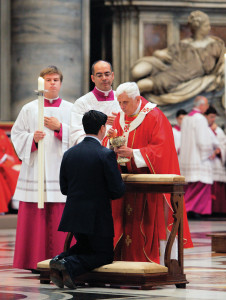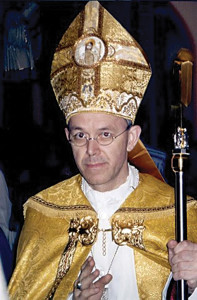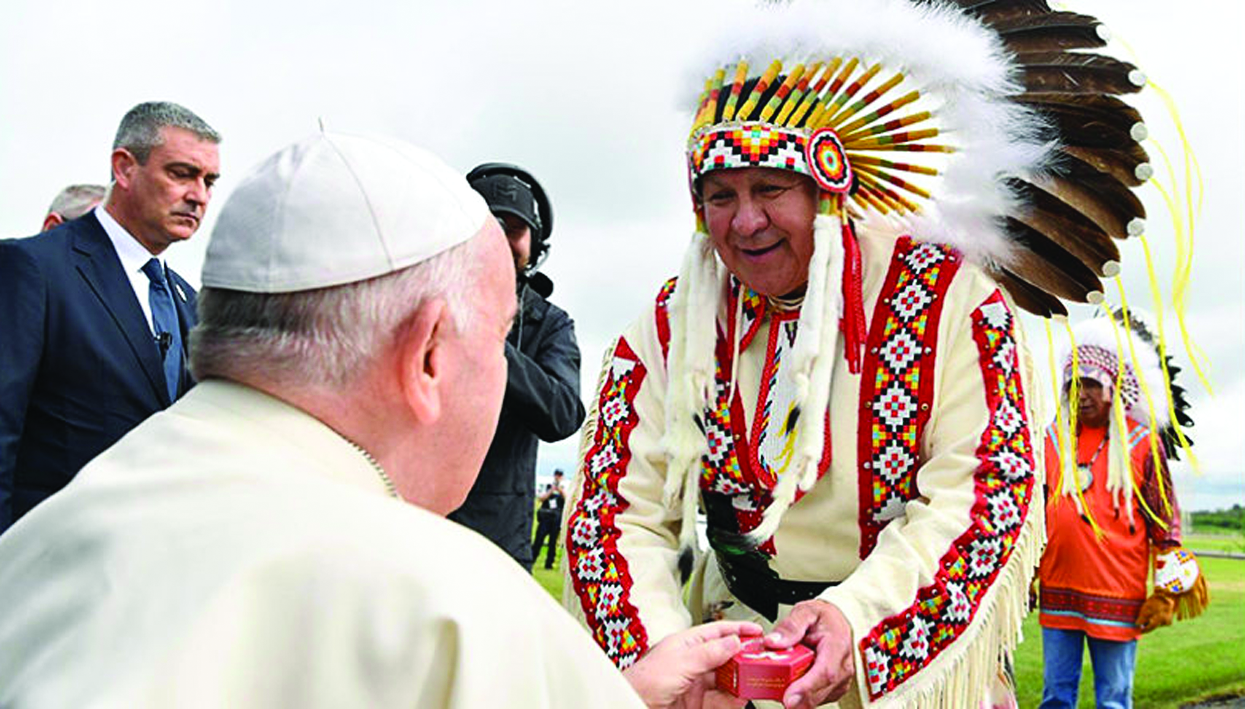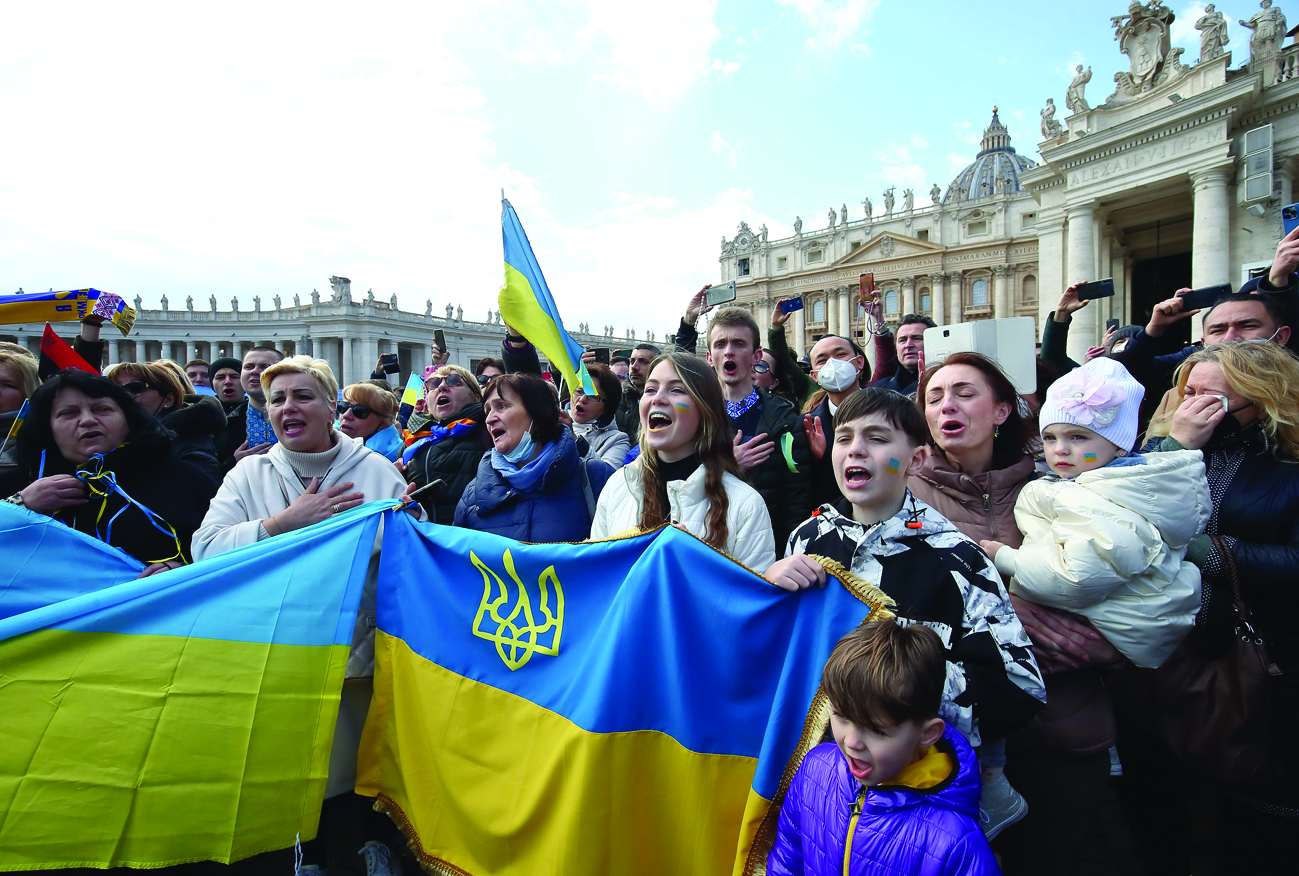Many Catholics on opposing sides of the religious spectrum, namely those in favor of tradition and others upholding a progressive vision of the Church, perhaps still remember, albeit for different reasons, the celebration of the Feast of Corpus Christi in Rome on May 25, 2008, when Benedict XVI started for the first time to publicly administer the Body of Our Lord directly onto the tongues of the faithful on their knees.
But what were his motives? A recent book presentation helped shed light on this episode. The presentation was held as part of the program of the second CISP (International Coordination Summorum Pontificum) pilgrimage which brought to Rome 1,000 traditional-minded Catholics from around the world on the weekend of October 24-27, 2013. The auxiliary bishop of the Archdiocese of Mary Most Holy in Astana, Kazakhstan, Msgr. Athanasius Schneider, besides being among the protagonists of the pilgrimage as celebrant of one of its three Extraordinary Form pontifical Masses, (in the personal traditional parish of Santissima Trinità dei Pellegrini on October 25, 2013), was also the author of the book being presented at the Centro Russia Ecumenica a few steps away from the Vatican.
The book, published by LEV (Libreria Editrice Vaticana, the Vatican publishing house), is titled Corpus Christi, la Santa Comunione e il rinnovamento della Chiesa (“Body of Christ, Holy Communion and the Renewal of the Church”) and is focused on the need and, indeed, obligation for all Catholic faithful to have a special devotion and proper respect and reverence for the Holy Eucharist.
Msgr. Schneider is secretary general of his local conference of Catholic bishops and chairman of the liturgical commission. And precisely as bishop, with this text he intends to give voice “to the many and quiet little ones of the Church who wish to defend the One who, nowadays, is the poorest” (pp. 93, 94), namely, Our Lord in the Holy Eucharist.

Right, at St. Peter’s Basilica on November 3, 2008, during a Mass for the cardinals and bishops who had died during the previous year, Pope Benedict XVI distributes Holy Communion on the tongue to the faithful who are kneeling.
Msgr. Schneider was born and spent his early youth in the faraway former Soviet republic of Kazakhstan in central Asia, where his family had been deported by Stalin due to their German origin, and during his presentation he recalled that what gave martyrs and confessors the strength to endure suffering and, above all, the strength of interior peace amid the inhuman conditions of their life in prisons and concentration camps, was the Most Holy Eucharist. “When we read testimonies of their lives, we find there for us today an example of their deep faith in the mystery of the Most Holy Eucharist, their ardent love and their delicate reverence of this sublime mystery of our faith, because they knew: the Eucharist is the Lord: ‘Dominus est.’ And with this, all was said,” the senior prelate said.
“Even in the miserable conditions of their catacombs, they always showed the utmost care and reverence for the Eucharist. Not a single detail of the rite of the Mass and the external gestures was considered secondary. What an example for us, who live in freedom and therefore with so many opportunities to celebrate Mass with solemnity and all the richness of a worship worthy of the Divine Majesty! Let us compete with them in the way we celebrate and venerate the Blessed Sacrament. What an example of faith it would be, amid today’s liturgical crisis of the Latin Church, for Catholics to receive Holy Communion kneeling and on the tongue at all the Masses offered throughout the world; for signs of adoration, silence and sacredness of music to be increasingly present in the liturgy; for the priests and the faithful to turn to the Lord in body and soul, together looking to the face of the Crucified or the face of Christ in the tabernacle at the center of the church. Thus, faith will grow and become more and more Catholic, more and more Eucharistic,” he went on.
Likewise, it was again precisely thanks to a solid devotion to the Eucharist that his family could survive amid unimaginably harsh conditions and foster and preserve their Catholic faith. Therefore, one can just imagine their shock when they could move back to West Germany exactly 40 years ago and became aware that in the West there were Catholics who received the Host in the hand and standing. All the more shocking, in a way, was it for him to hear a priest telling him (he was 15/16 years old at that time) that it was the system used in the early Church and if he really wanted to be a traditionalist, he just had to comply with it. But he felt in his heart that this could not possibly have been so, and in fact, years later the patristic and ancient liturgy studies prior to his ordination proved him right.
He sets forth these truths in this book, and in a previous one entitled Dominus Est, riflessioni di un vescovo dell’Asia Centrale sulla sacra comunione (“It is the Lord: Reflections of a Bishop of Central Asia on Holy Communion”), whose manuscript he managed to deliver to Benedict XVI with an accompanying letter imploring that he “in the name of Jesus Christ, see to it that when you administer Communion, all the faithful should receive the Host from your hands only, on their knees and on the tongue. This would set an example for all.”

pictured in a 2011 photo, Bishop Athanasius Schneider, who is also secretary general of the local conference of Catholic bishops and chairman of the liturgical commission.
To his great surprise, five weeks later the nuncio in Kazakhstan gave him a sealed and confidential letter from the Vatican: it was the Pope’s articulated answer with the following words in his typical German style: “Ihre Argumente sind überzeugend” (“Your arguments are convincing”). The author interpreted this reply as a green light for publication, which was subsequently accomplished by the Vatican Press.
His book was published in early 2008 and Benedict XVI started to administer the Body of Our Lord directly onto the tongues of the faithful on their knees with the celebration of the Feast of Corpus Christi in Rome on May 25, 2008.
“I was in Kazakhstan when I saw for the first time on the internet that Pope Benedict was giving Communion on the tongue to the faithful kneeling on a kneeler set up for that purpose,” the bishop recalled. “I was so overwhelmed with happiness that I fell on my knees before the computer and prayed a Te Deum.”
“Subsequently I was in Rome and went to a general audience,” he went on. “As you know, bishops are allowed to greet the Pope at the end of the audience, and so I did, telling him in German: ‘May God reward you for the miracle that came about, that you started to give Communion in this way.’ He smiled and answered me in German: ‘This way is more suitable, more appropriate.’ This was his concise answer.”
Due to his pastoral commitments, also as a member of the Asian Bishops’ Conference, Schneider has traveled a great deal and visited many countries in these last five years: Korea, the Philippines, Thailand, and also Brazil, America, and Europe. He has observed that, regrettably, the situation of Communion in the hand is increasingly spreading. “At present, Our Lord is finding himself in a wretched, woeful situation, because of distribution of Communion in the hand,” he said. “What is all the more serious is the loss of the small fragments, a real and immense loss, fragments that fall down and subsequently are trodden upon by our feet. Just imagine Our Lord, stepped on by so many faithful in so many churches around the world! It’s really horrible! Could we still be indifferent? And how could you think that with such a situation an authentic renewal of the Church can come about?”
There will only be a true renewal of the Church when the faithful, and the clergy first of all, genuinely aspire to holiness, which is the perfection of charity, Msgr. Schneider continued. But holiness and charity toward one’s neighbor is not there and will never be there without the reverent worship of God, that is, without a reverent and Christocentric liturgy. Holiness and true charity to one’s neighbor will never materialize unless today’s Church kneels down cum amore ac timore (“with love and fear”) before Christ, truly and substantially present in the Eucharistic mystery.
That’s why in his book Schneider makes it clear that a true renewal can only be ushered in by a proper devotion to the Holy Eucharist, by recalling that “since the inception of her historical trajectory, the Church has experienced her most fruitful times and epochs when she was rendering profound veneration and worship to the Most Holy Eucharist. In these times the authentic effects of Pentecost were visible” (p. 29). As a direct consequence, “therefore, the greater the reverence and the fear of God as reflected by the rites and gestures of the Holy Mass, the more the liturgy can call itself pentecostal, that is. laden with the fruits of the Holy Ghost” (p. 30).
According to Schneider, our modern practice of Communion in the hand is “the most tearing scourge in the mystical Body of the Church of Christ” (p. 33-34), for four main reasons: 1) reverence and worshiping gestures are marked by a surprisingly minimalist and downplaying approach;
2) the habitual use of one’s hands may convey the wrong impression to the faithful (especially children and adolescents) that we are handling ordinary food as a mere religious symbol rather than the actual Body of Our Lord; 3) an abundant dispersion of fragments which may fall to the ground; and 4) an exponential growth of the risk that the Sacred Host may be stolen by ill-intentioned people for unholy or evil purposes.







Facebook Comments